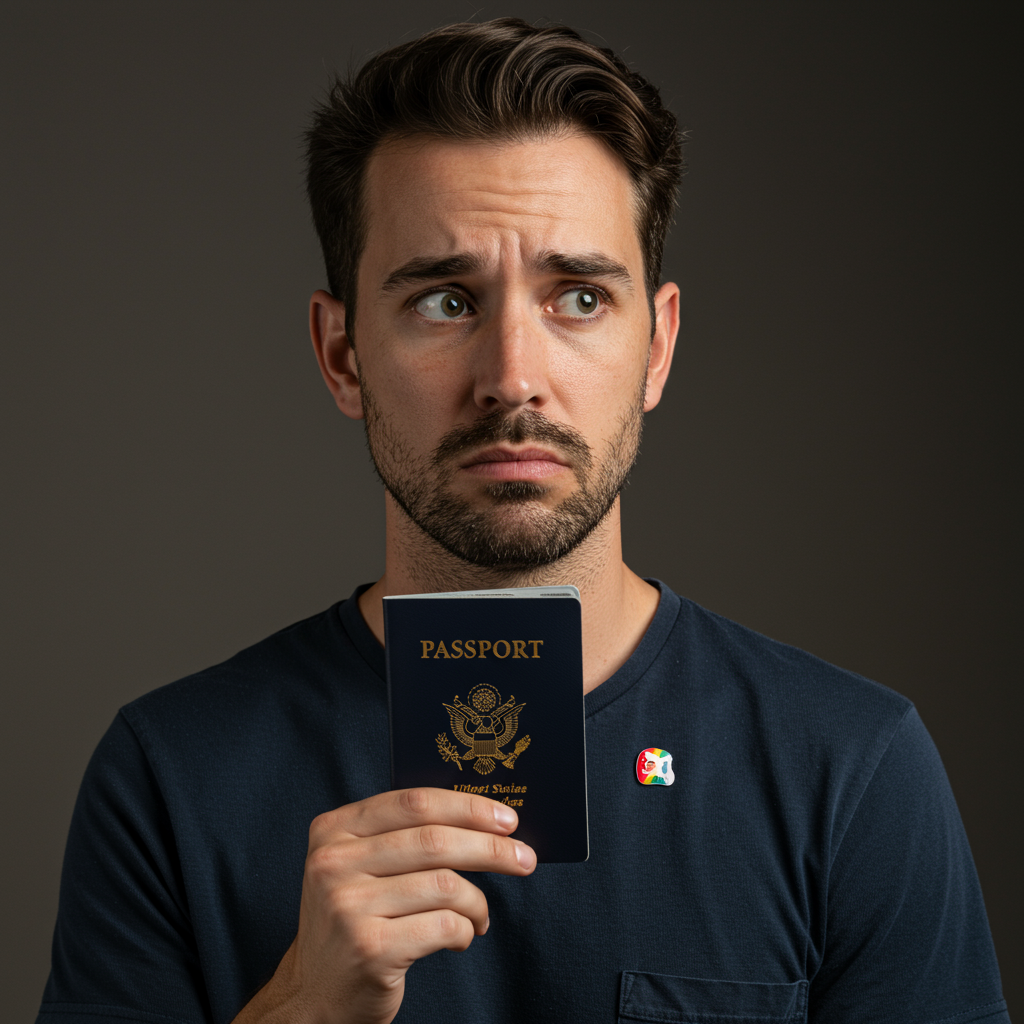In a harrowing incident aboard the disney Dream cruise ship, a courageous father demonstrated extraordinary heroism by leaping into the Atlantic Ocean to rescue his young daughter after she fell overboard. The rapid actions of the parent, coupled with a swift and coordinated response from the Disney Cruise Line crew, culminated in a successful rescue, averting what could have been a tragic outcome. The dramatic events unfolded as the vessel neared the conclusion of a four-night voyage from the Bahamas back to its homeport in Fort Lauderdale, Florida.
The Unexpected Emergency at Sea
The tranquility of the cruise was abruptly shattered by an urgent announcement over the ship’s intercom system. Passengers heard the alert “Mr MOB … port side,” the standard maritime code signifying “man overboard.” This chilling signal immediately put the crew on high alert and drew worried onlookers to the ship’s railings. Multiple reports confirmed the critical detail: a child had gone overboard from the fourth deck. The incident occurred around 11 am on a Sunday morning as the ship sailed toward its destination.
Witnesses onboard described the sudden panic and disbelief as the situation unfolded. The idea of someone falling from a large cruise ship, especially a child, is deeply unsettling for travelers. Despite the presence of safety barriers, including plexiglass panels on the fourth deck, the precise circumstances that led to the girl’s fall remain unclear. One passenger account speculated the child might have been sitting on a railing before the fall, though this is unconfirmed.
A Father’s Instant, Heroic Leap
In the face of unimaginable terror, the child’s father made a split-second, instinctive decision. Without hesitation, he plunged into the vast ocean below, following his daughter into the water. This act of immediate self-sacrifice was driven by pure paternal instinct and became the crucial first step in the rescue operation. Passengers watching from above were stunned by the father’s incredible bravery, recognizing the immense danger he faced by entering the open sea far from land.
The father’s ability to quickly locate and reach his daughter in the water was critical. Despite the choppy conditions of the Atlantic, he managed to get hold of her. Their immediate proximity in the water significantly increased their chances of being found together quickly by rescue teams.
Against the Waves: Treading Water and Drifting
Once in the water, the father and daughter faced the daunting challenge of staying afloat and visible. While reports on the exact duration vary, passenger accounts suggest they were in the water for an estimated 10 to 20 minutes before the rescue boat reached them. As the massive cruise ship slowed, turned, and began rescue procedures, its initial momentum meant the father and daughter were some distance away when the rescue vessel was deployed.
From the deck of the Disney Dream, onlookers could see the two struggling in the water, appearing as tiny, distant figures against the vastness of the ocean. Maintaining buoyancy and keeping the child secure for that length of time in open water requires immense physical and mental fortitude. Passengers described the agonizing wait as the ship’s crew launched their rescue effort, sending prayers and hopes towards the bobbing pair drifting farther from the ship’s hull.
Swift Action: The Ship’s Coordinated Rescue
The Disney Dream crew initiated their emergency response protocols with remarkable speed and efficiency. Upon receiving the “Man Overboard” alert, the ship’s captain took immediate action to slow the vessel and maneuver it for rescue. Crew members swiftly deployed a bright yellow rescue boat, specifically designed for such emergencies, into the water. Life preservers were also reportedly thrown towards the location where the father and daughter were last seen or spotted.
The highly skilled crew members operating the rescue boat navigated quickly to the location of the father and daughter. Passenger videos captured the tense moments as the rescue vessel approached the pair. The relief was palpable onboard the main ship as the crew in the rescue boat successfully pulled the child and then her father from the water. Eyewitnesses reported seeing the father carefully hand his daughter over to the rescue crew before boarding the boat himself.
Demonstrating Effective Safety Protocols
Disney Cruise Line later confirmed the incident and commended their crew’s exceptional performance. In a statement, the company highlighted that their crew members “swiftly rescued two guests from the water,” attributing the successful outcome to their “exceptional skills and prompt actions.” The statement emphasized that the safe return of both guests to the ship occurred “within minutes” of the rescue boat’s deployment. This underscores the effectiveness of the company’s established safety protocols and the preparedness of their staff.
Disney cruise ships, including the Dream, are equipped with advanced systems, such as overboard detection technology, designed to alert the crew in real-time if someone goes into the sea. While the specifics of how this system factored into this particular rescue weren’t detailed, its presence indicates a commitment to utilizing technology to enhance guest safety. The successful rescue in this incident serves as a testament to the training and readiness of the crew to handle critical emergencies at sea.
Overboard Incidents: A Rare Yet Serious Risk
While this incident had a positive resolution, falling overboard from a cruise ship is an inherently dangerous event. According to data from the Cruise Lines International Association (CLIA) and other maritime safety analyses, overboard incidents are statistically rare when considering the millions of passengers who cruise each year. Estimates suggest roughly 20 to 25 such events occur globally each year, equating to approximately one incident per million cruisers.
However, when these incidents do occur, they are tragically often fatal. A dataset analyzing overboard events between 2009 and 2019 found that only a small percentage of individuals who went overboard were successfully rescued, indicating a typical survival rate between 17% and 25%. This stark statistic highlights just how remarkable the successful rescue aboard the Disney Dream truly was. The combination of the father’s immediate action, keeping his daughter afloat and together, and the ship’s rapid, effective response significantly beat the odds in this instance.
Passenger Reactions and the Wave of Relief
The dramatic events deeply affected the passengers onboard the Disney Dream. Many rushed to the railings to watch the rescue unfold, sharing their observations and emotions on social media platforms. Descriptions ranged from the terrifying sight of the father and daughter appearing as small dots in the ocean to the intense relief and spontaneous applause that erupted once the successful rescue was confirmed.
Passengers like Dewayne Smith documented the scene with photos and videos, sharing the real-time progression of the emergency and rescue. Others, such as Tracy Robinson-Hughes and Shannon Pechaek Lindholm, expressed immense admiration for the father’s heroism and described the outcome as a “miracle” or “miracle x2.” The collective experience fostered a sense of shared anxiety and subsequent joy and gratitude among those who witnessed the event. The safe return of the father and daughter was met with widespread cheering across the ship’s decks.
Aftermath and Continued Commitment to Safety
Following the successful rescue, the father and daughter were brought back aboard the Disney Dream. Fortunately, no serious injuries were reported for either individual, a truly fortunate outcome given the circumstances. The ship subsequently continued its journey and docked at Port Everglades in Florida as scheduled early the following morning.
The incident, while resolved safely, serves as a potent reminder of the inherent risks associated with being on a large vessel at sea and the absolute necessity of vigilance and adherence to safety guidelines. Disney Cruise Line reiterated its commitment to guest safety and well-being in the wake of the event, emphasizing that their safety protocols and the professionalism of their crew were instrumental in ensuring the safe return of the guests. This dramatic rescue highlights the critical interplay between individual bravery and well-executed emergency procedures in overcoming maritime emergencies.
Frequently Asked Questions
How did the child fall from the Disney Dream cruise ship?
The exact cause of the child falling from the Disney Dream’s fourth deck remains unclear. The fourth deck area where the incident occurred is equipped with safety barriers, including plexiglass panels, designed to prevent falls. While one passenger speculated the child might have been sitting on a railing, this has not been officially confirmed. Investigations into the precise circumstances of the fall are standard procedure following such an event.
What safety measures does Disney Cruise Line have to prevent guests from falling overboard?
Disney Cruise Line implements multiple safety measures, including physical barriers like railings and plexiglass on decks. Their ships are also equipped with advanced technology, such as overboard detection systems, designed to alert the crew if someone goes into the water. Furthermore, the crew undergoes rigorous training in emergency response, including “man overboard” scenarios, ensuring swift and coordinated actions like deploying rescue boats and utilizing life-saving equipment.
Were the father and daughter injured after falling from the Disney Dream cruise?
Fortunately, both the father and daughter were reported to be rescued safely from the water. While being in the ocean for an extended period presents risks, reports from the incident indicated that neither individual sustained serious injuries. Their successful retrieval by the ship’s crew and safe return aboard the Disney Dream brought immense relief to fellow passengers and the crew alike.



